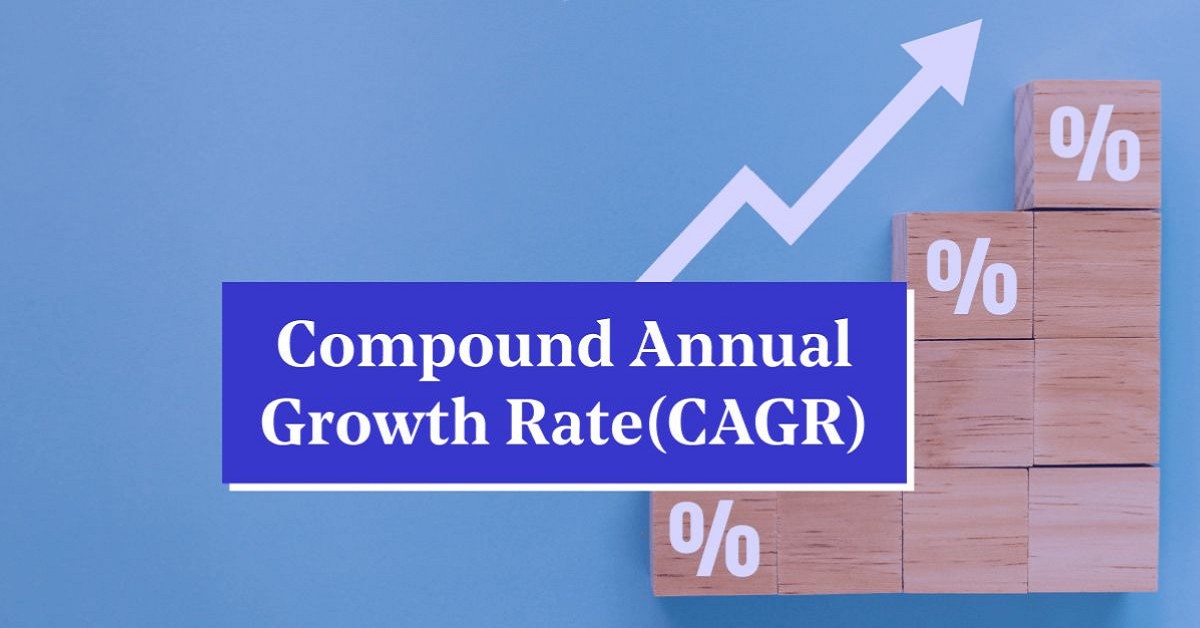When evaluating investment performance, Compound Annual Growth Rate (CAGR) is a widely used metric. It calculates an investment's average yearly growth rate over a certain time period while including compounding. While a positive CAGR indicates steady growth, a negative CAGR can raise red flags for investors. It is crucial to understand what negative CAGR signifies and how it impacts your portfolio to make informed financial decisions.

What is a negative CAGR?
A negative CAGR highlights that an investment's value is going downhill over the given time period. Instead of growing, the investment has shrunk in value, reflecting a consistent annual decline. For instance, for a stock portfolio that starts with Rs. 1 lakh and ends with Rs. 70,000 after three years, the CAGR will be negative because the value has decreased annually when averaged.
CAGR, whether positive or negative, assumes a smooth rate of growth or decline, though actual performance can be more volatile. Negative CAGR is especially significant as it highlights a loss in the compounded value of an investment.
Implications of negative CAGR
1. Erosion of wealth
Negative CAGR directly reflects the diminishing value of your investments. This could lead to wealth erosion, particularly if it persists over an extended period.
2. Portfolio underperformance
A negative CAGR can indicate fundamental issues with the underlying investment, such as declining market conditions, poor financial health of the company, or ineffective diversification strategies.
3. Missed opportunities
A portfolio with negative CAGR indicates that the capital has not been used effectively, especially when other investments could have delivered better returns.
4. Risk of overexposure
A negative CAGR might also signify overexposure to volatile or underperforming assets. For instance, excessive reliance on specific sectors or instruments prone to market downturns could result in consistent losses.
How to interpret negative CAGR in your portfolio
- Review historical context: Analyse market conditions during the investment period. A temporary economic downturn may explain the negative CAGR, which could improve in the future.
- Assess individual assets: Identify specific investments contributing to the decline. Poorly performing stocks or sectors may require rebalancing or replacement.
- Diversify investments: A well-diversified portfolio is less likely to experience a significant negative CAGR, as losses in one asset class may be offset by gains in another.
- Evaluate risk tolerance: A negative CAGR may result from investments in high-risk assets. Rework and rebuild your portfolio with your risk tolerance and financial goals.
How to mitigate the impact of negative CAGR
1. Reassess your strategy: Periodically evaluate your investment goals and strategies. If a particular asset is consistently delivering negative returns, consider reallocating funds to better-performing alternatives.
2. Diversify your portfolio: Spread investments across various sectors, asset classes, and geographies to reduce the impact of underperformance in one area.
3. Focus on long-term goals: Short-term negative returns might not significantly impact long-term objectives. Maintain a disciplined approach and avoid panic-driven decisions.
4. Monitor market trends: Stay updated on market movements, economic indicators, and industry trends that may affect your portfolio's performance.
Conclusion
A negative CAGR highlights consistent annual declines in the value of an investment, signalling potential issues with the portfolio's performance. While it can be concerning, understanding the causes and implications of negative CAGR allows you to take proactive steps.






 CAclubindia
CAclubindia

